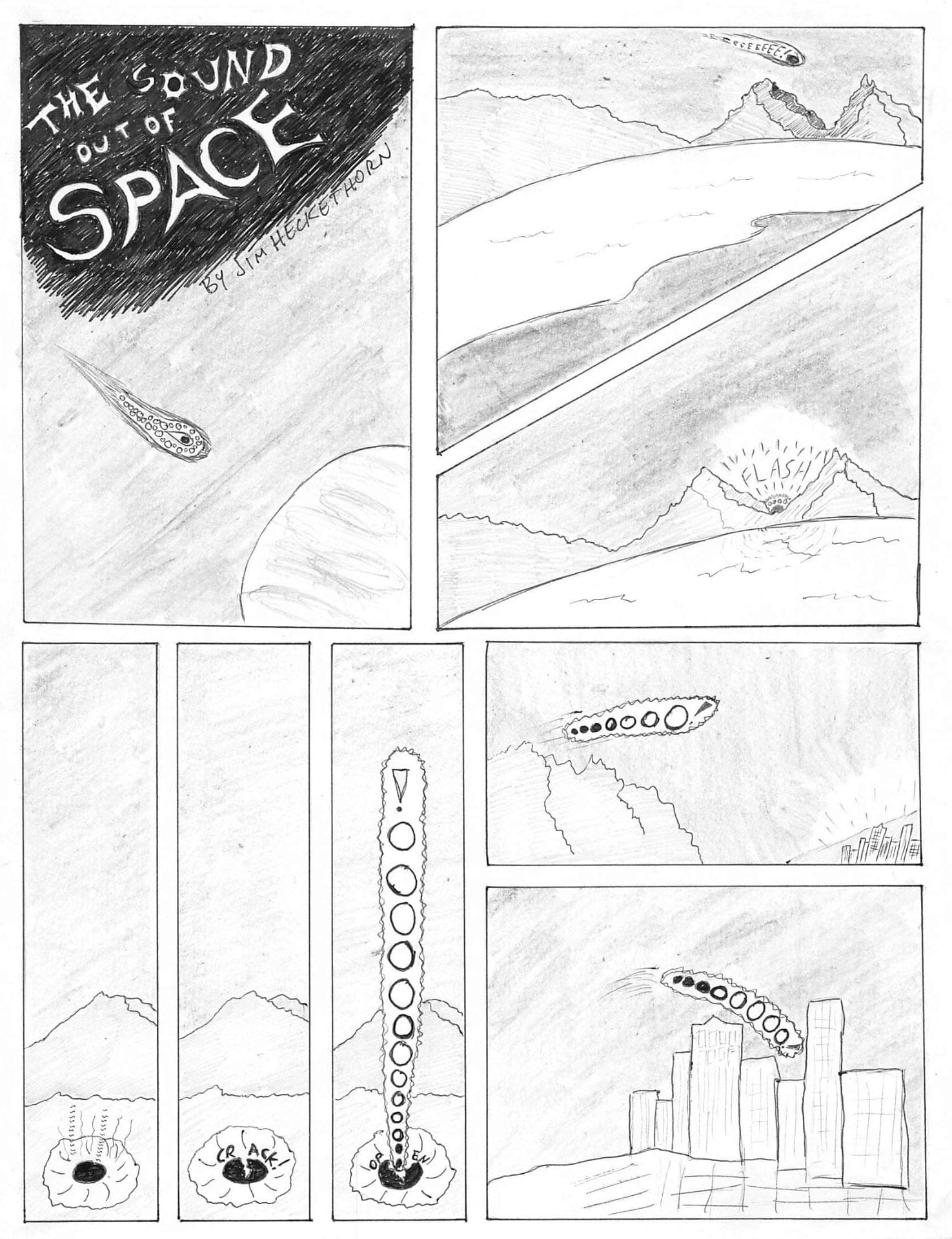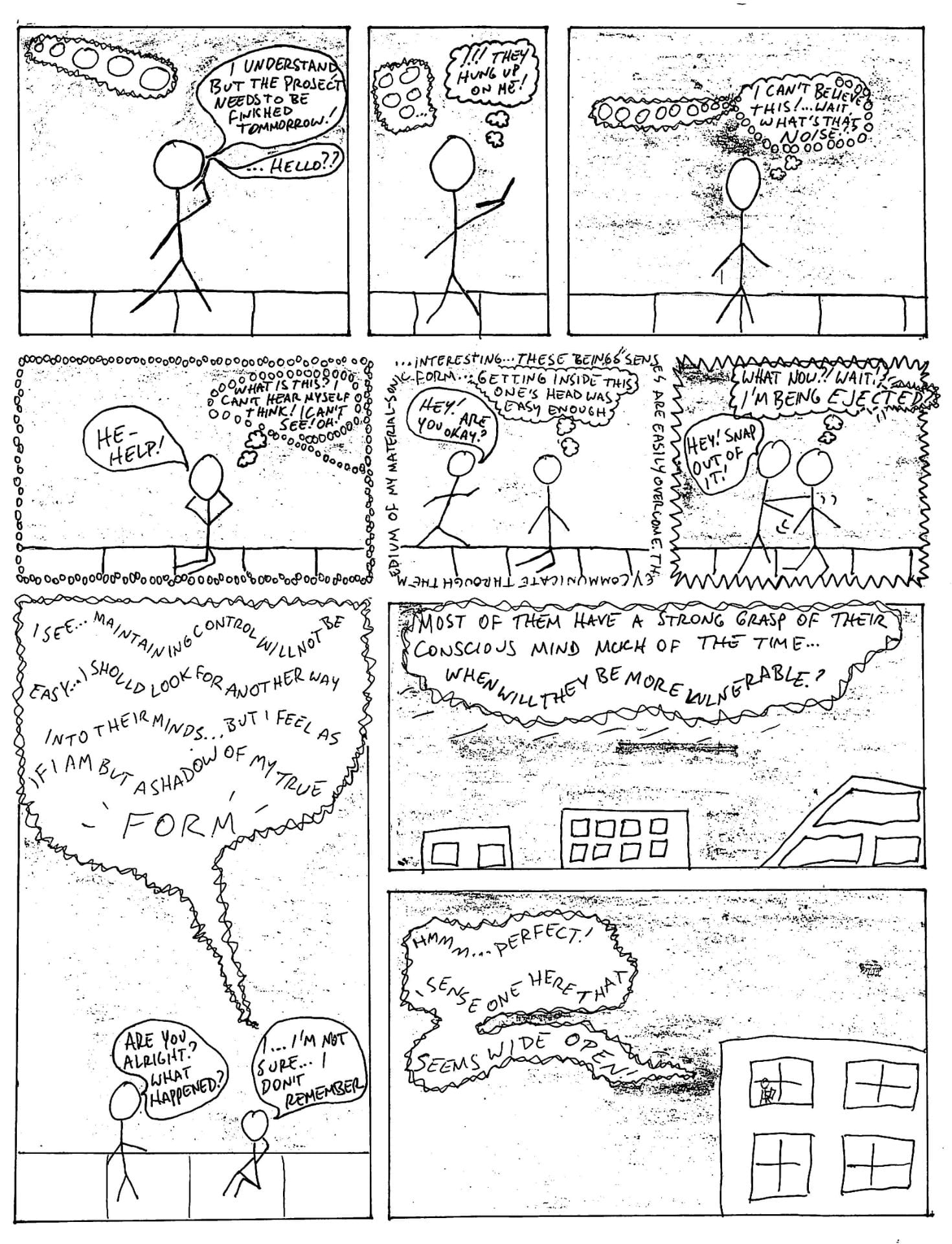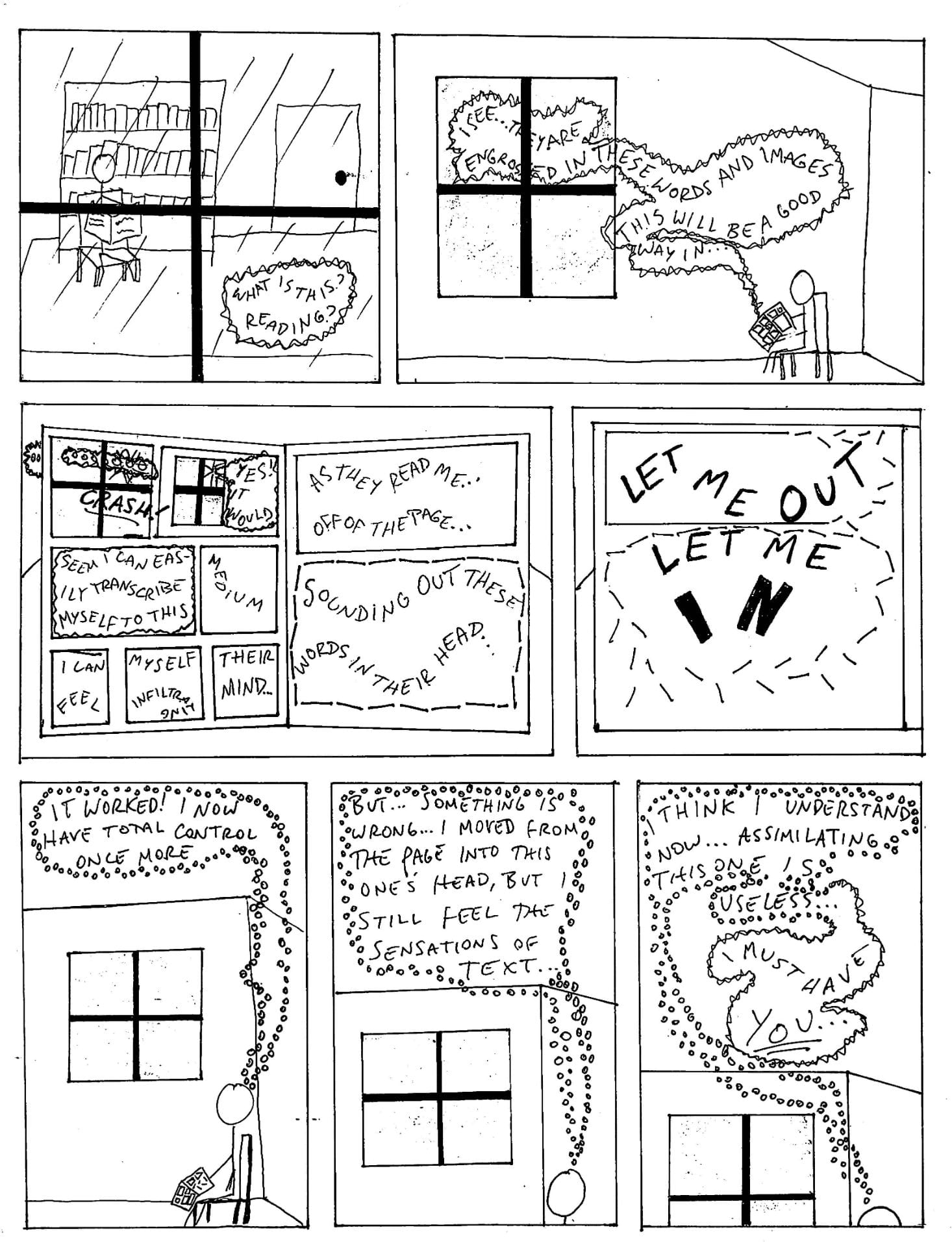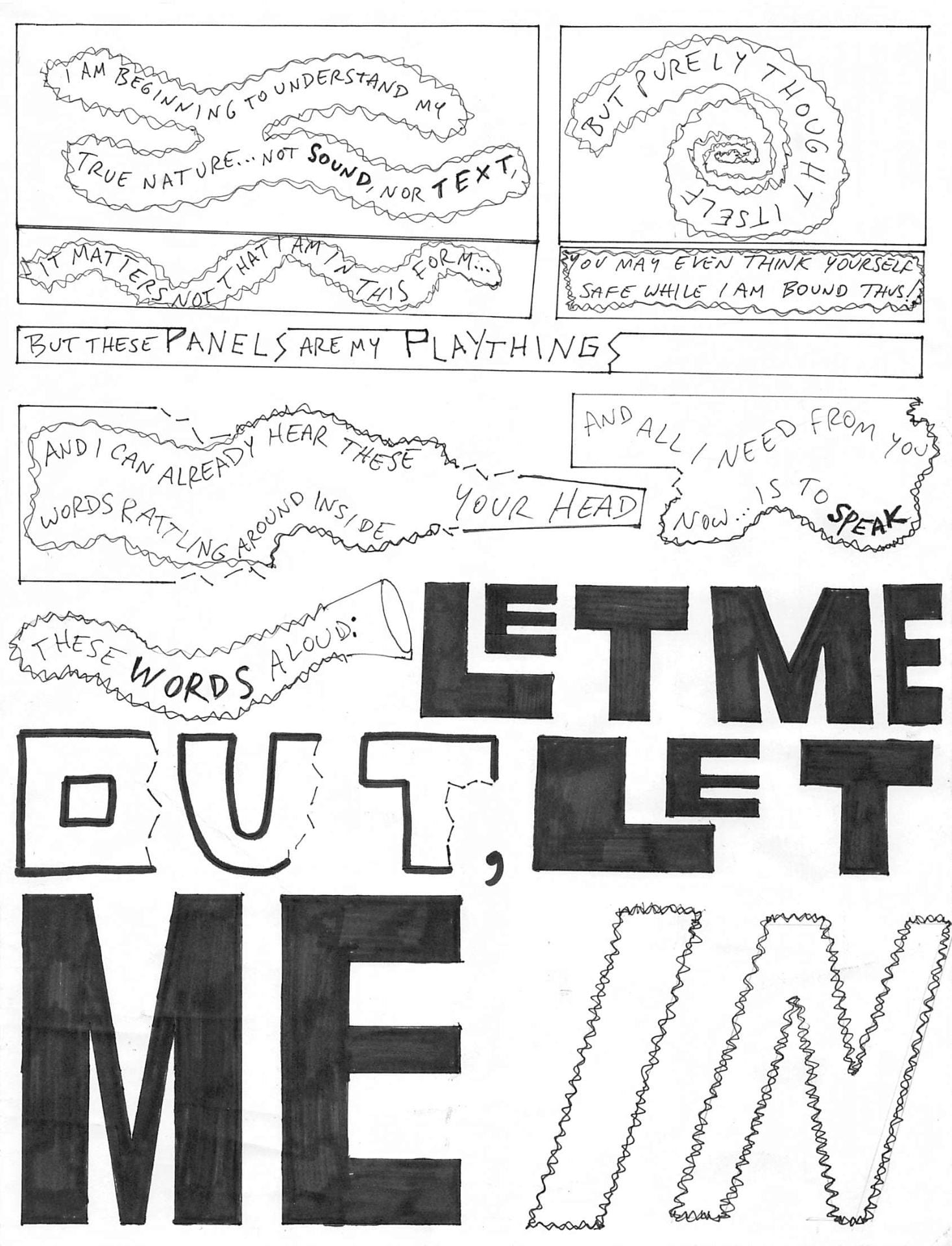



Artist Statement
In the comic, The Sound out of Space, I attempted to adapt the idea from H.P. Lovecraft’s The Colour out of Space of a being that assimilates and changes the fabric of reality surrounding it. Using the medium of language and sound as it is depicted in comics, I explore various ways in which text can affect the space of a comic. In my piece, an entity of personified sound invades the minds of humans first by overcoming their senses with sound, then by replacing their inner monologue of thought. Finding this first method to be a failure, the being attempts to jump into another person’s mind by taking up the words and images on a page from a comic they are reading.
On page two, the way the being takes over one person’s mind is shown by onomatopoeic text breaking into and replacing first their thought bubble, then the panel around them. In this sense the panel is understood to be the boundary or horizon of this character’s reality. They can’t think or see beyond the invading noise, and then a sentient voice takes up the space and inner thoughts around them. This control breaks and the panel snaps back to reality just as the character is shaken awake by a bystander. The being rises up, ejected from the mind of their first failed victim, and searches for a more vulnerable consciousness.
The third page explores the structure of the comic, and the ways panel layout replicates itself in other grids and proportions of boxes and bubbles. The second victim of the being is reading a comic, which replicates the page itself and as we zoom in, the being becomes self-aware on the page and manipulates the panels, as it comes to do later in the main frame comic as well. It breaks out and into the character’s mind as its words are spoken aloud. The final panel of this page sees the being becoming self-aware again, having recognized what it feels like to be text on a page, and points out the reader.
The final page climaxes with the ultimate goal of the piece, the being breaking out of the panels and the comic itself, addressing the reader and ostensibly speaking itself into existence through control of the reader’s mind. This plays on the ability of comics to utilize the reader’s perspective to further a narrative, such as the use of gutters for off-screen action. The images and words of a comic conjure within the mind of the reader a number of layered associations and imagery. Using the natural pace of the text as it is being read, this final page gives the feeling that the comic takes itself over and supplants the agency of the reader entirely.
Overall, I am satisfied with the impression of these ideas given by the comic. Using various visual cues and sound effects to contextualize the being, it made for a good vehicle to explore the ways text and sound can be utilized in the minds of the characters within the comic as well as the readers themselves.
©2020 James Heckethorn
